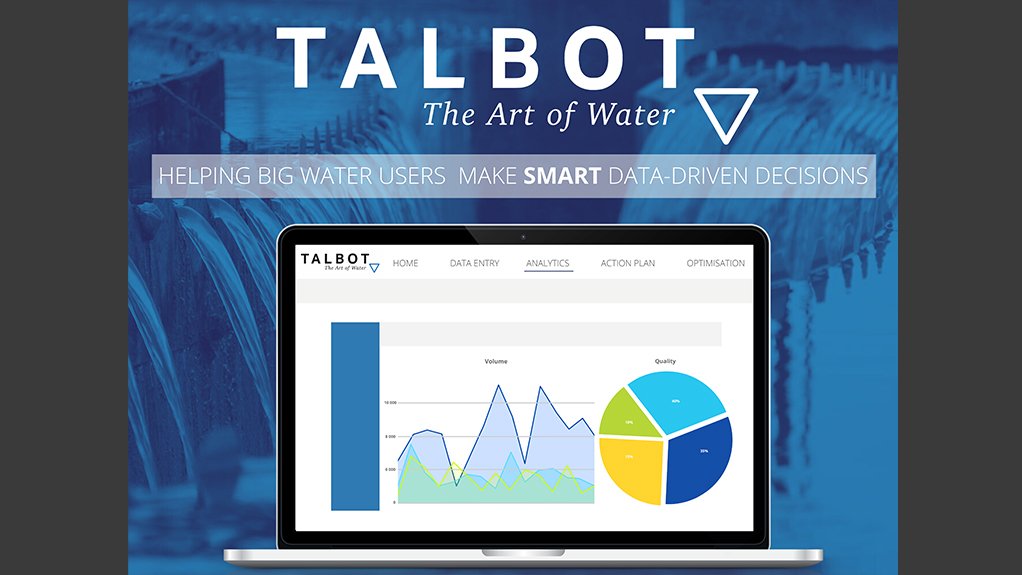
Sustainable water and wastewater solutions company Talbot has launched Talbot Analytics, a digital, cloud-based water management application that enables big water users to access and interpret big data, anytime, anywhere in the world.
Talbot developed the cloud-based platform in partnership with Microsoft, to give subscribers something they haven’t had before: a real-time, at-a-glance picture of how they are doing across the water spectrum.
“Big water data is big. It’s constantly changing, complex and comes from various sources. It’s also stored in different places so pulling it all together to make informed decisions is a science in itself,” says Talbot strategic director Helen Hulett.
Cost-effective, user-friendly and highly customisable, Talbot Analytics serves as a single repository that enables users to visualise and interpret their data so that they can make smarter, more insightful and strategic business decisions.
“These could relate to anything from water quality, environmental compliance, consumption, savings and recycling rates to cutting down on plant chemical costs and monitoring operator performance against standard operating procedures,” says Hulett.
“What is particularly advantageous amid current restrictions on travel is that decision-makers, environmental and operational personnel have a bird’s-eye view of the performance of their water infrastructure across countries and continents right from their laptops,” she says.
“A large number of our blue chip clients operate water and wastewater facilities across Africa (and beyond) which has in the past necessitated frequent travel to assess their performance across a range of parameters,” she says.
By subscribing to Talbot Analytics, they are able to radically reduce travel costs, save time and lower travel-related carbon emissions while gaining an improved awareness of how their facilities are actually doing and where they can improve.
The response from the market, including public sector water providers, she says, has been significant. “Clients are signing up for a multitude of different reasons. Some are using it to optimise their water cycles and to pinpoint sources of wastage and contamination, while others use it as a preventative maintenance tool so that they can pick up on problems with environmental and financial implications before they arise.”
One of Malawi’s biggest agricultural producers is the country’s largest private water supplier, this in a region where one in three people do not have access to a safe, clean and reliable supply.
“The company operates two large agricultural estates, one of which houses 11 water treatment plants alone. It has adopted Talbot Analytics to give it oversight of these plants and to ensure that the water it distributes to 30,000 Malawians every day meets the required quality standards,” she concludes.